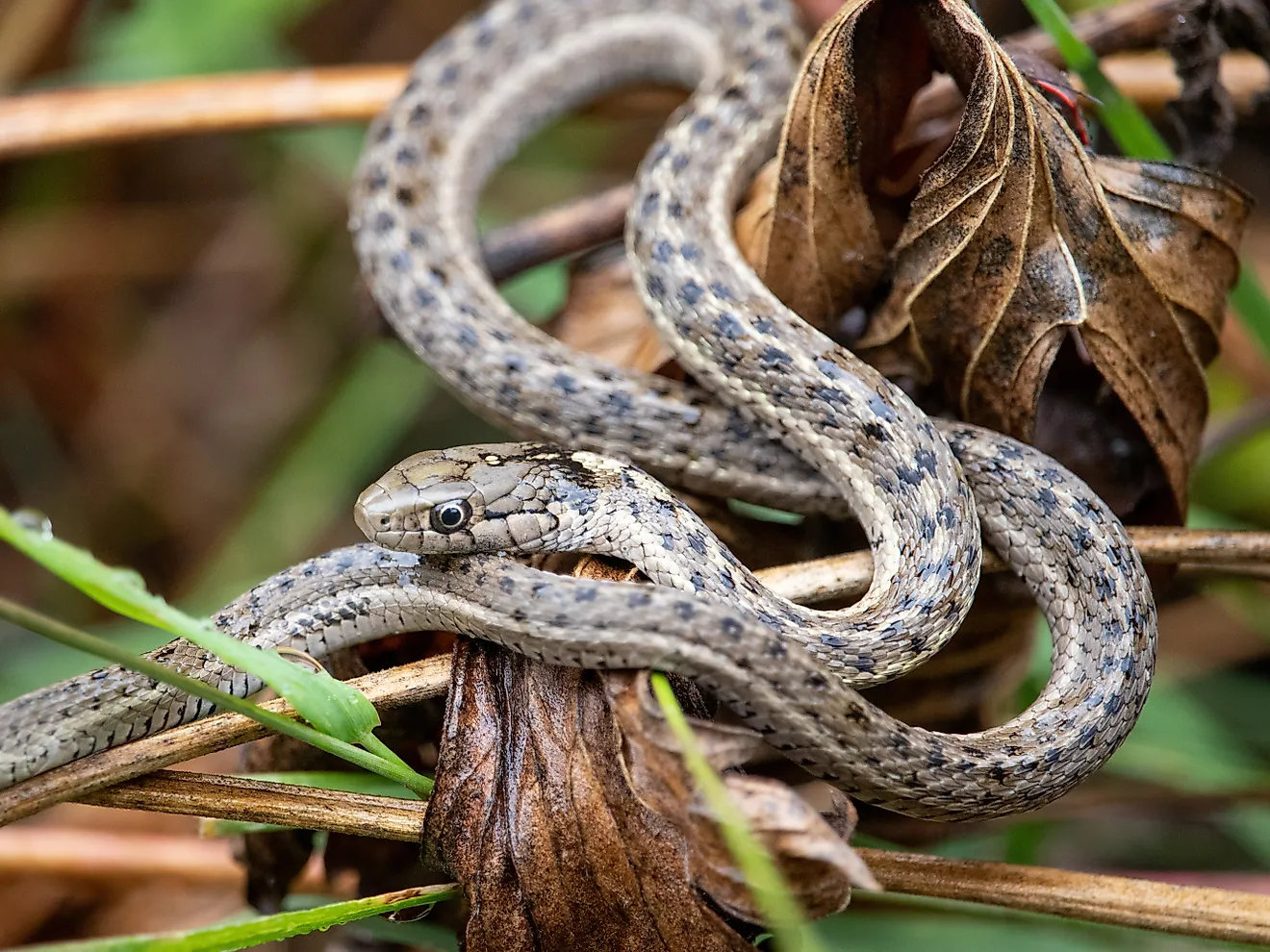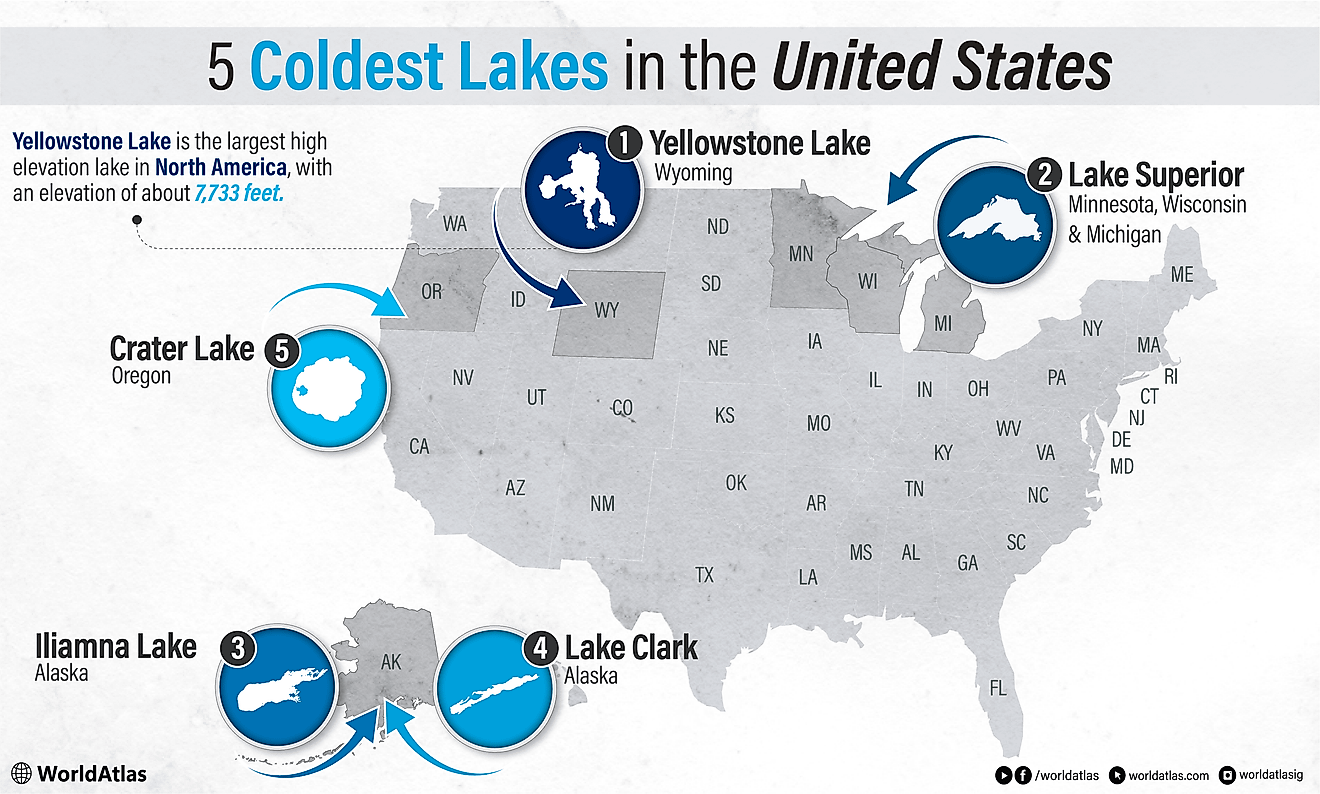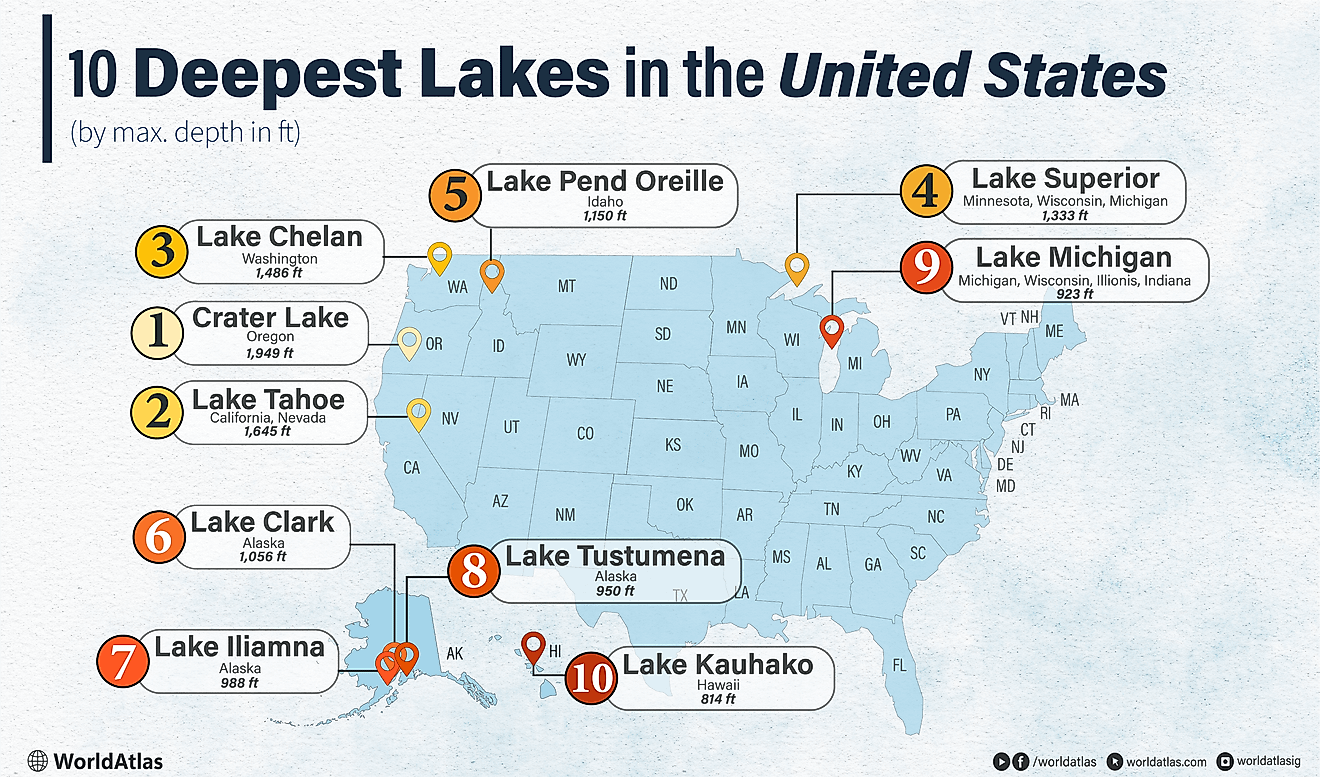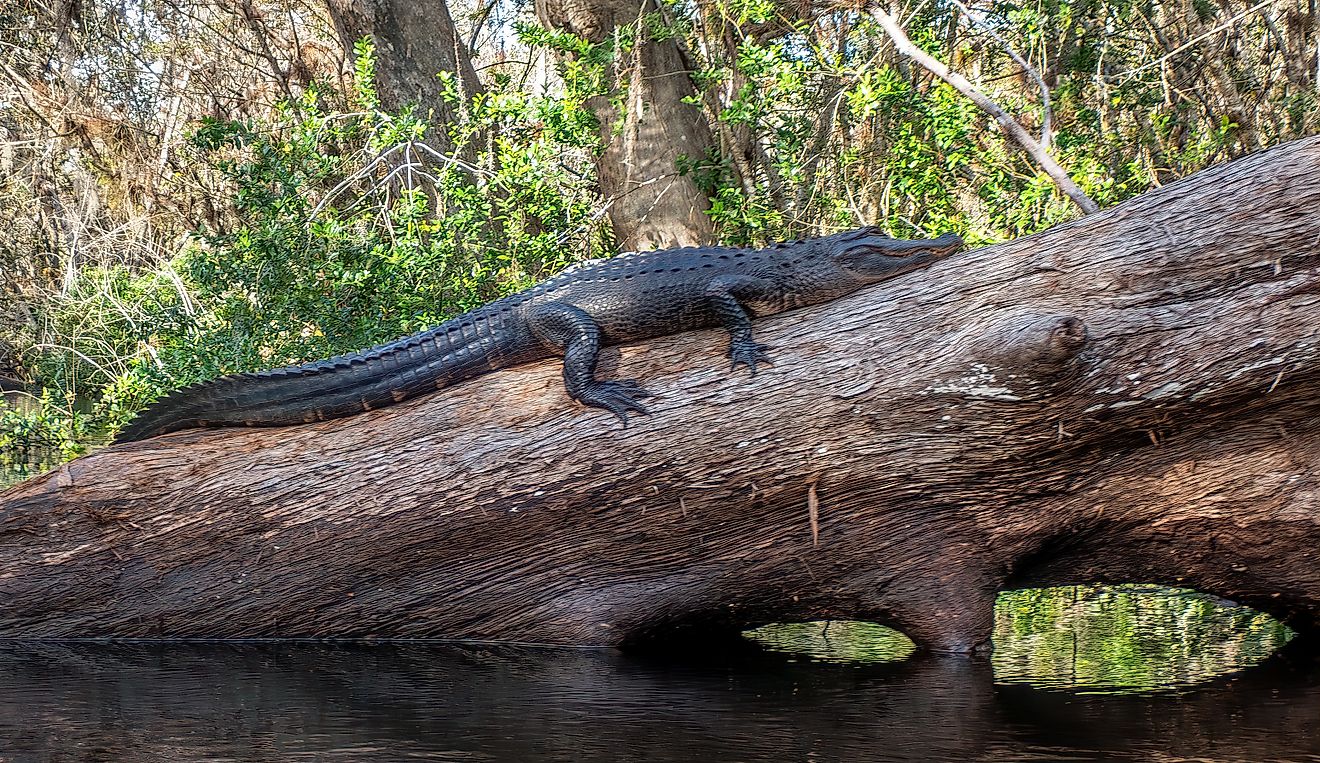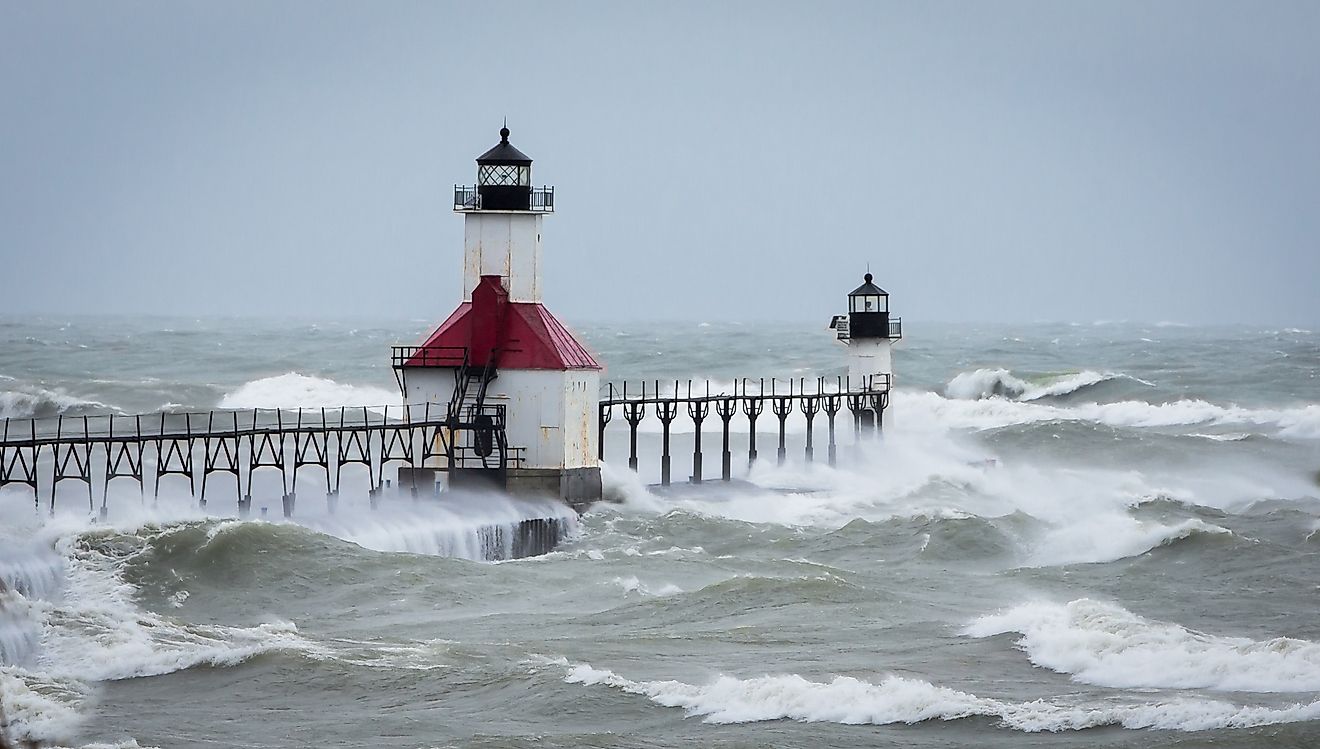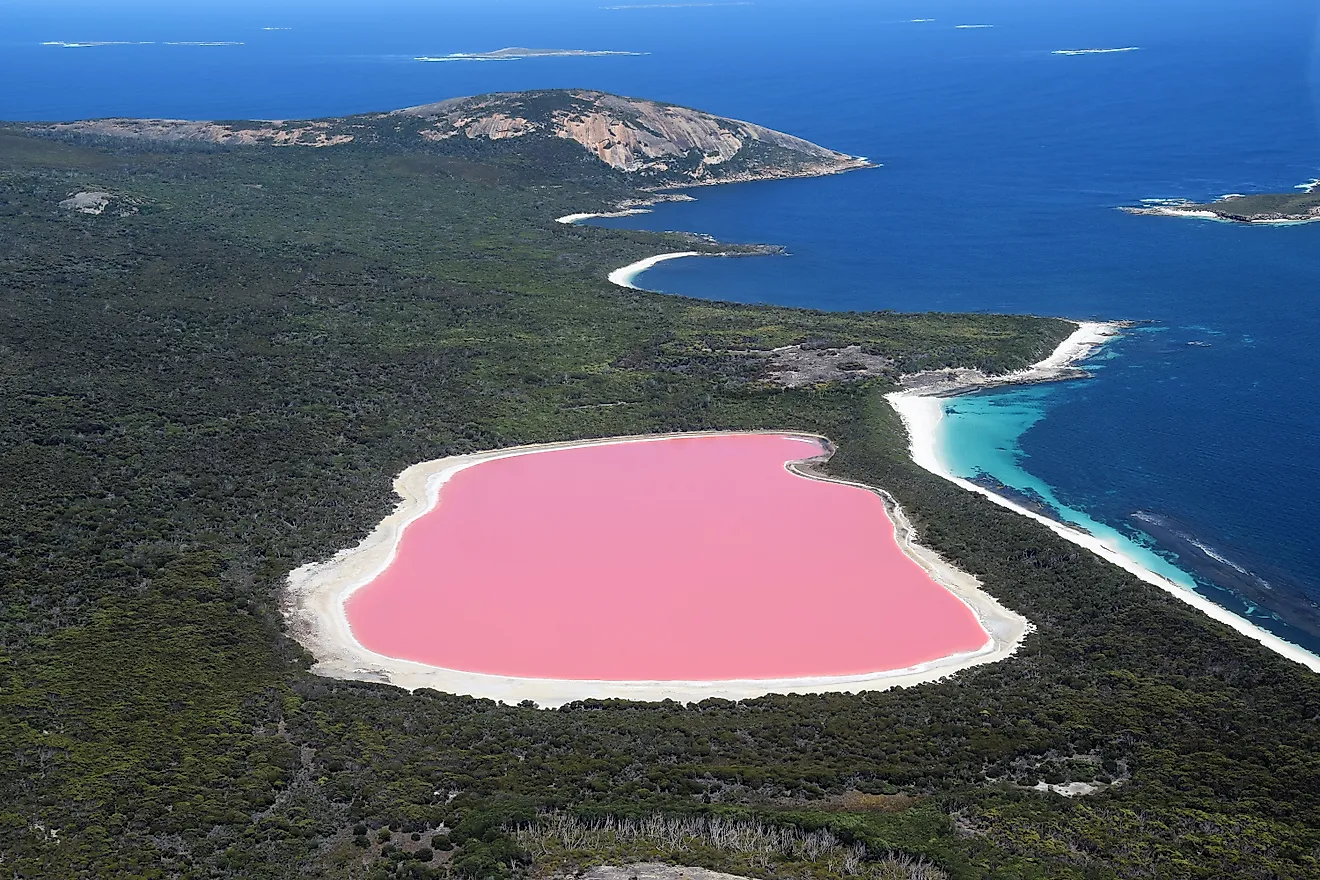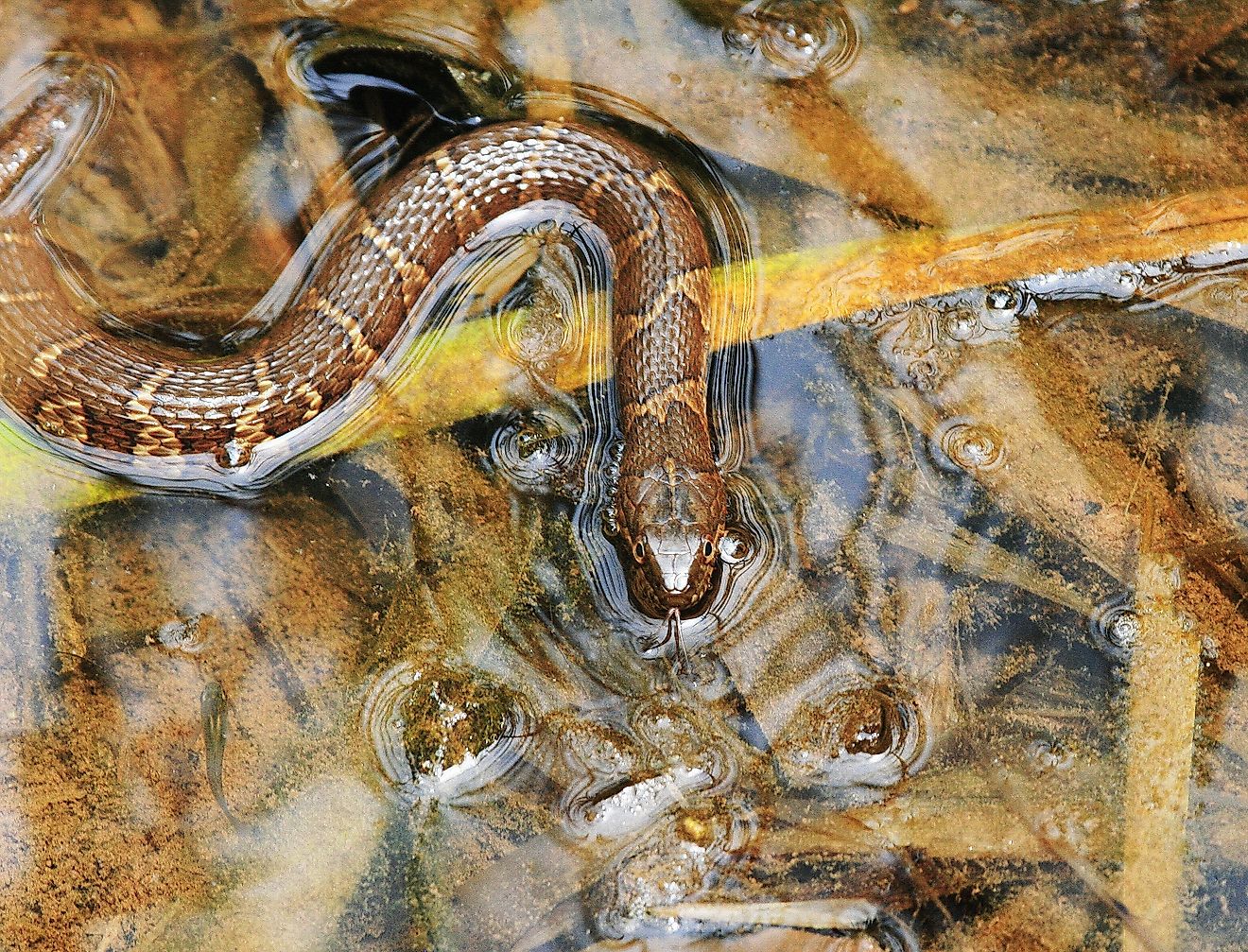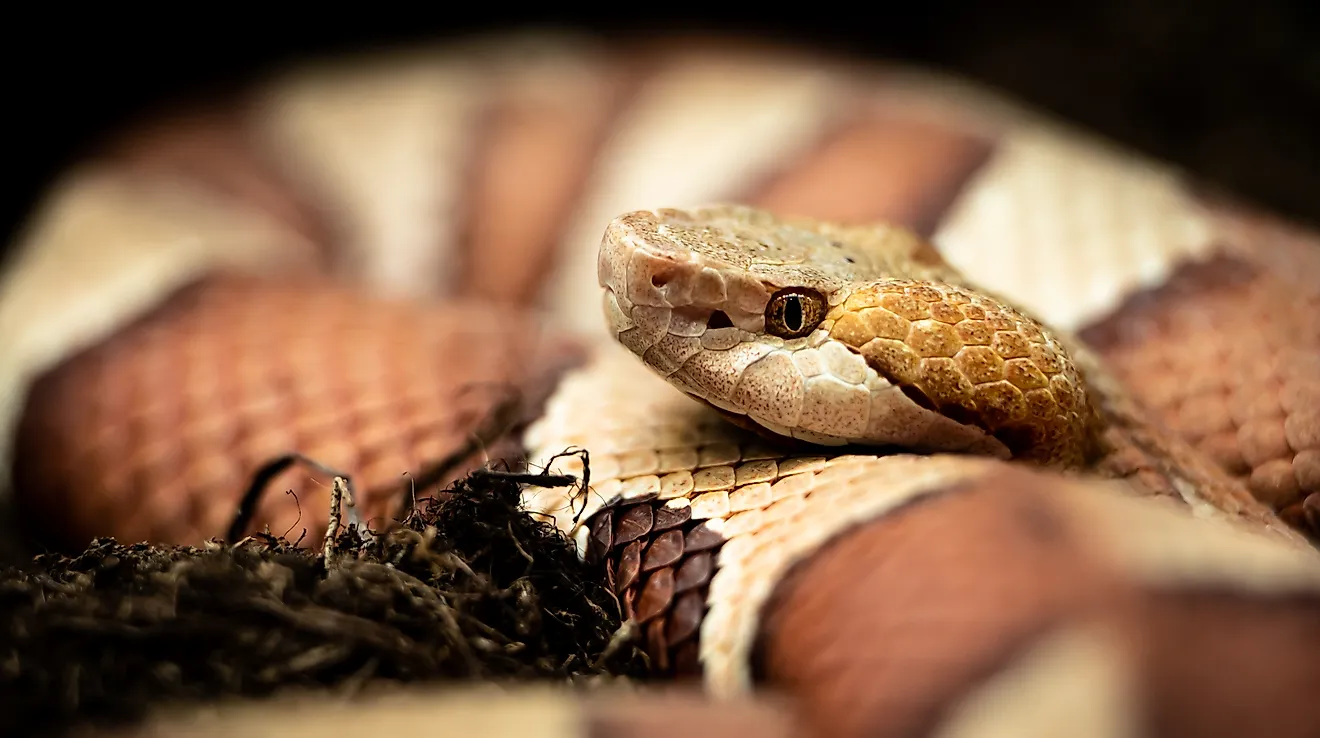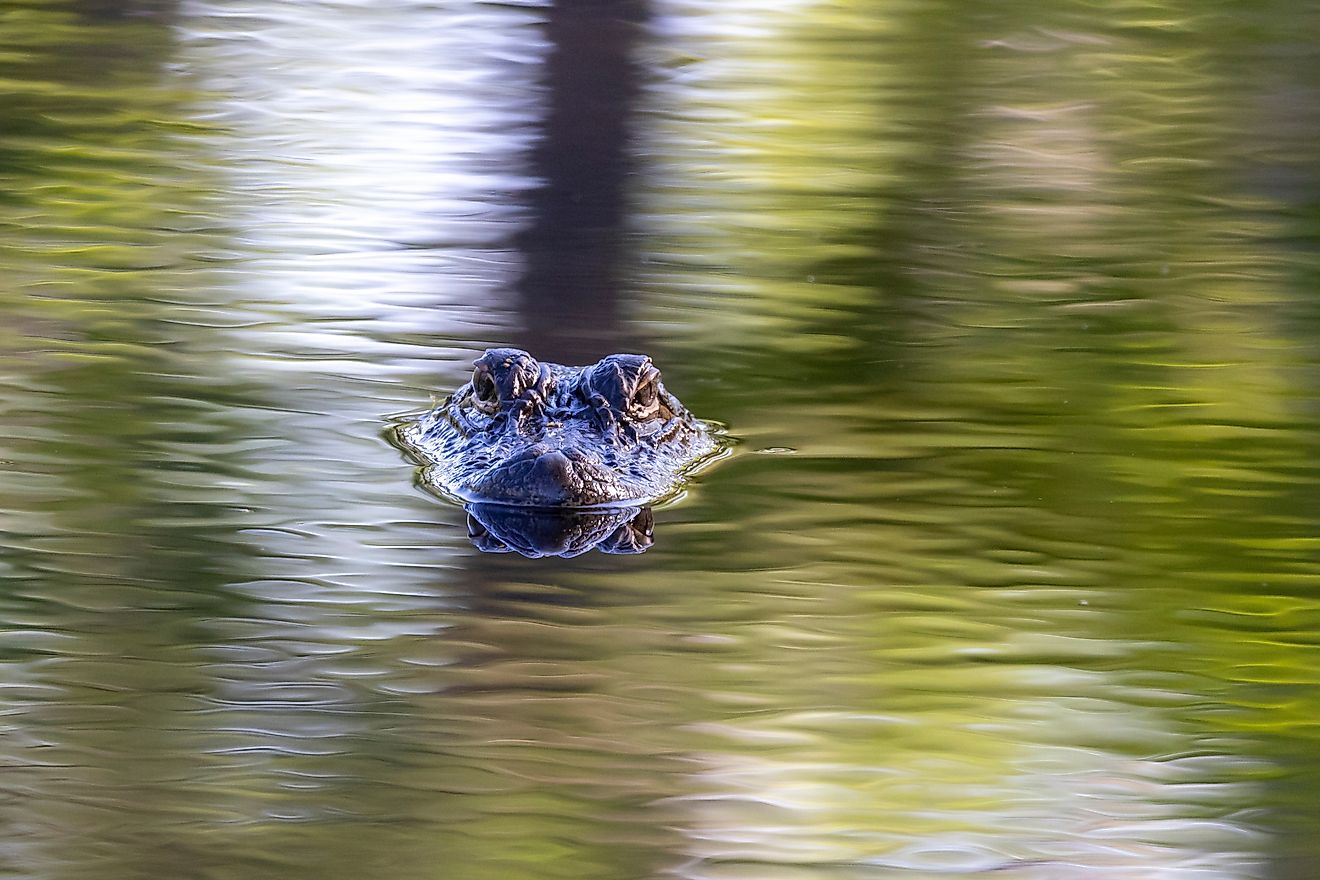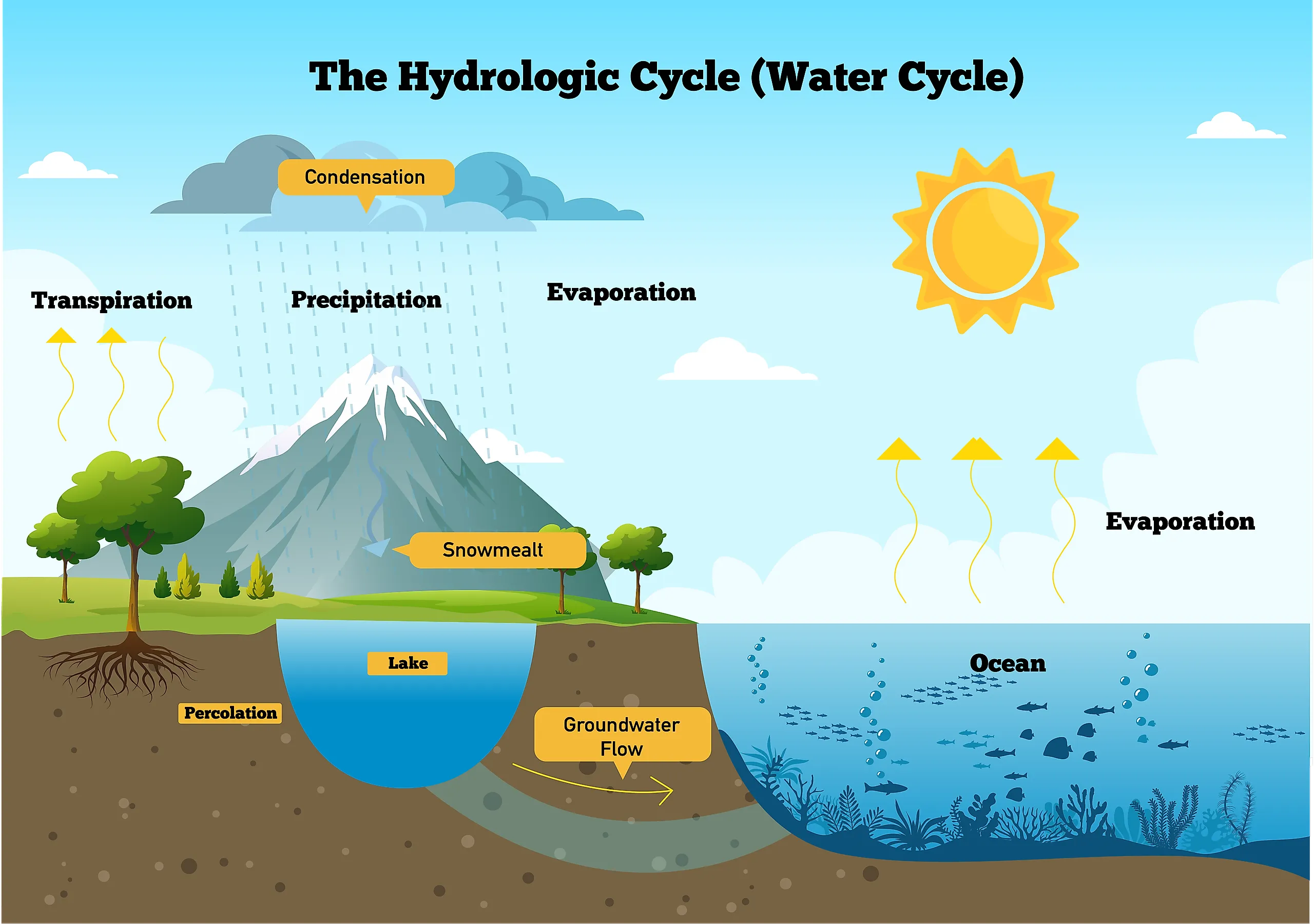
The Water Cycle
- The water cycle is the process through which water moves around the Earth.
- It follows the path of water as it changes from a liquid to a vapor, or even into solid form.
- The major stages of the water cycle are evaporation and condensation.
Seventy-five percent of the Earth consists of water. It is vital to life on this planet, makes up the majority of human composition, and is part of what makes Earth such a unique planet within our solar system. The water on our planet is also constantly in motion. This movement, and continued changes of the water on Earth is called the Water Cycle. This system describes the cyclical way in which water changes one one state to another, and moves its way around our planet.
Origins
Scientists estimate that water first existed on Earth as early as 3.8 billion years ago. When molten rock beneath the earth’s crust broke free, it released water vapor trapped within. This vapor formed part of the Earth’s atmosphere, where it may have stayed for a number of years. Then, when the temperature of the Earth entered a cooling phase, the water vapors in the atmosphere cooled and fell as rain and precipitation. This precipitation formed the oceans. Thus began the cycle, as the oceans and lakes would experience the current process of evaporation and condensation that form the water cycle.
Distribution Of Water On Earth
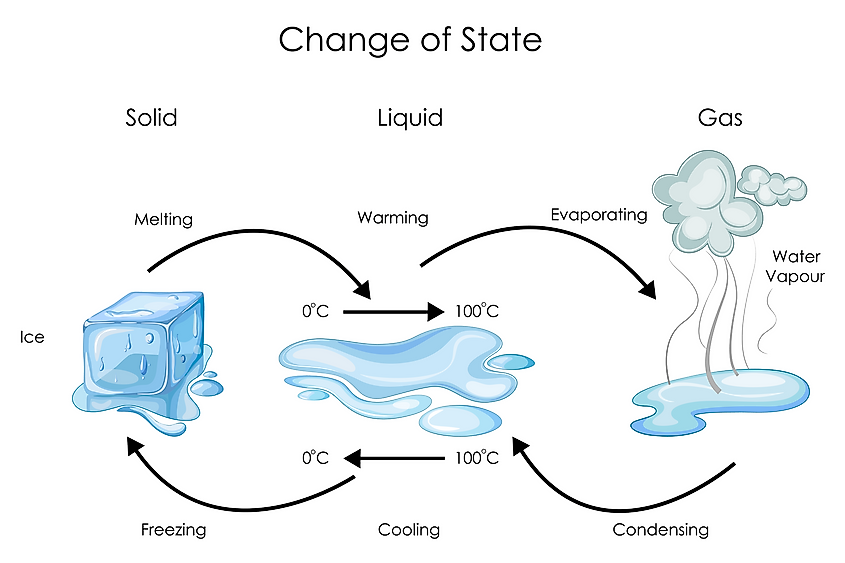
Water exist in one of three forms: solid, liquid or gas. Most of the water on earth exists in a liquid state, and includes all rivers, oceans, lakes, rivers streams, and any body of water. Roughly 97 percent of the earth’s water is held in the oceans and seas. The second most abundant state of water is a solid - that is, water in a frozen state. On Earth, 1.7 percent of water is in solid form, primarily in the polar ice caps and glaciers. Water vapor, which is water in its gas form, makes up only 0.001 percent of the Earth’s water sources, and water does not stay in a vaporous form for very long.
The water cycle is the process through which water changes states, and moves from the seas, to the air, and back to the earth again. It is constantly in motion.
Evaporation
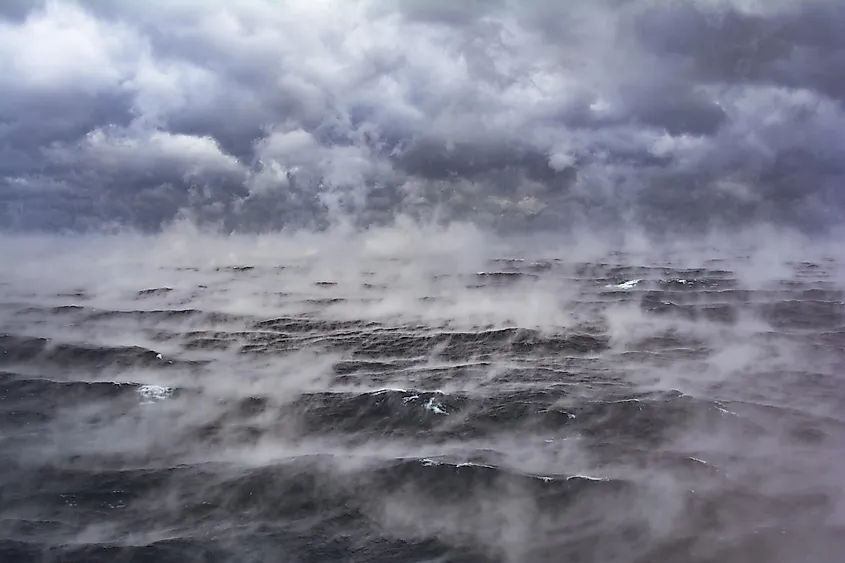
Most of the Earth’s water exists in liquid form, in various bodies of water. This water, as a liquid, travels in constant motion towards the sea. However, liquid can also turn into water vapour in a process called evaporation. Evaporation describes the process by which liquid water transforms into a vapor. Take the example of a puddle on a hot day. The water exists in the puddle - or a lake, pond or ocean. When this puddle then experiences hot, dry environments, say, the sun comes out the next day, the liquid in the puddle begins to warm up. The energy from this heat helps break the bonds which hold the water molecules together, effectively releasing them and allowing them to change into a vapor. With the example of the puddle, the energy from the sun breaks the bonds in the water, and causes the water to turn to a vapour, which rises into the atmosphere. Because heat and energy cause this process to occur, hotter temperatures allow this vaporization to occur at increased rates. This can be seen in the example of boiling water, or a kettle, which once boiled, releases a great deal of visible steam - which is simply water vapor.
Water does not need to be at a boiling point, though, in order to evaporate. A puddle on the street will rarely, if ever reach 100 degrees celsius (boiling point), but it still evaporates - the process just takes longer.In fact, even solid water, i.e. ice, can evaporate. This process is called sublimation. Sublimation is far less common, but is essentially the same, as ice or snow transforms into a vapor, but bypasses the liquid state.
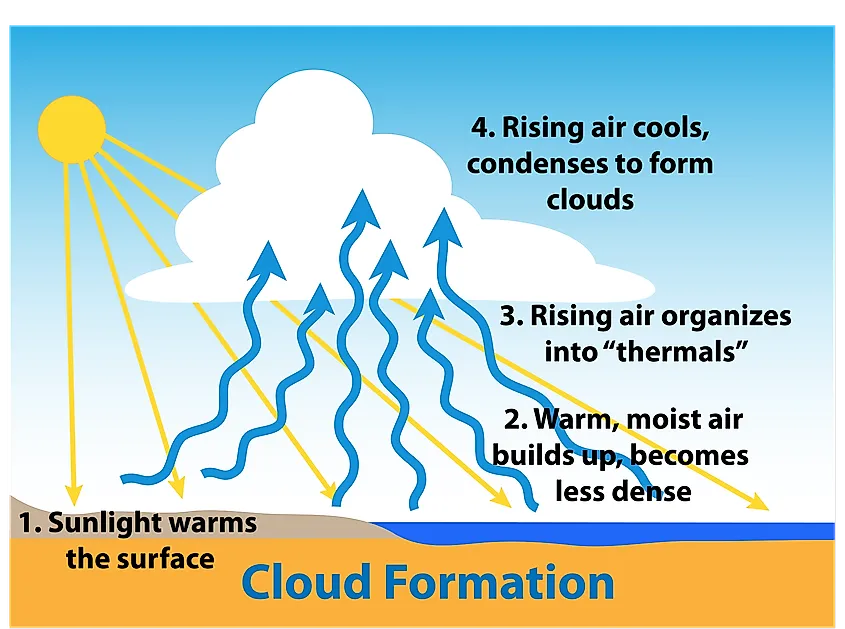
Now, the water exists in a vapor form, and becomes part of the Earth’s atmosphere. Here, it usually collects with other water vapors, forming clouds. Other vaporous examples are fog and mist. The atmosphere always has some level of moisture in it, and the measure of this is called humidity. Humidity is most often associated with weather and meteorology. When a climate is described as humid, it is particularly damp, and the atmosphere holds a larger percentage of water. This humidity level is almost always measured on a percentage scale from 1 - 100, whereby 100 percent humidity would indicate rain.
Transpiration

Transpiration is another process that forms part of the water cycle. Plants absorb water through the roots and it moves through the plant and a small amount is used for plant growth and metabolism. The remaining 97–99.5% of the water is lost through leaves by the processes of transpiration and guttation. This water also forms part of the water cycle.
Condensation And Precipitation
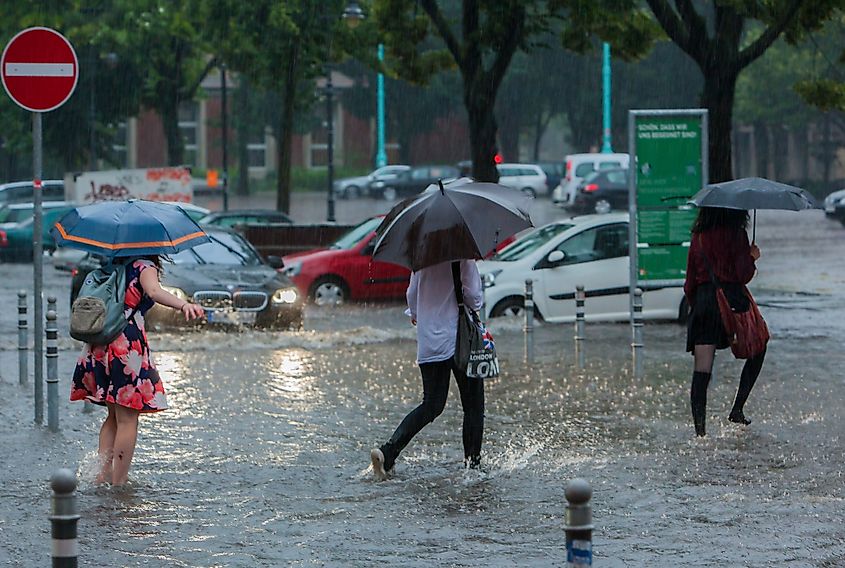
When the air becomes particularly humid, and is very full of water vapor, the air is thought to be 'heavy’. These water molecules collect, growing in density, until they become too heavy to be held within the atmosphere. This happens when heavily water-saturated air cools to a point where it becomes liquid. In the atmosphere, when heavily concentrated (or highly humid) air begins to cool, clouds and water vapor becomes liquid. This is the process of rain. The water vapor has become so heavy and cool, that it can no longer hold its vaporous state, and instead falls back to the earth as precipitation: rain, sleet, snow, or hail. These more solid examples, i.e. hail and snow, occur when the condensation hits extremely cold atmospheres, where it then solidifies as it falls back to Earth. This rain, back in liquid form, returns to the Earth’s rivers, lakes and streams, or falls to solid ground where it is either absorbed, or will eventually be re-evaporated, like in the example of the puddle. In the case of snow, sleet or hail, the solid water reaches the Earth where it eventually melts, is absorbed, or sublimates.
Water In Constant Motion
This ongoing process of the water cycle means that water is constantly in motion on Earth. As such, all water sources are in some way connected, from the ground water trapped below the surface, to the deep sea, the rivers and lakes in urban areas. All water is one, at some point in time, and circles through the process of liquid, vapor or solid, as it travels its way around the world.
